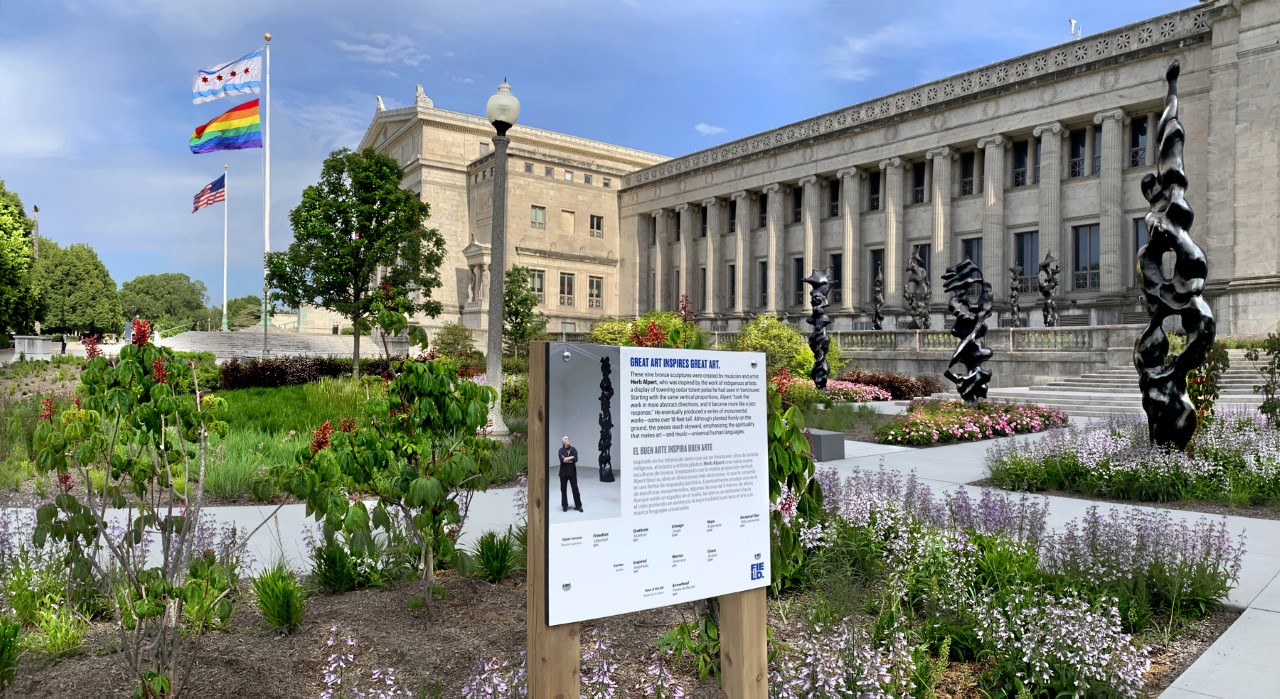In the early 1900s, Museum Campus—the peninsula of land on which the Field Museum sits—was engineered with clay, dirt, and landfill. Over the next century, this plot of land would consist mostly of walkways, turf grass, and a mixture of native and non-native plants, which in turn led to poor soil quality, wasteful land management practices, and diminished biodiversity.
The Field Museum transformed its own backyard by introducing the Rice Native Gardens, a multi-year project that involved studying the City of Chicago’s lakefront and planting native, pollinator-friendly flora on the Field’s grounds. The new native plantings reflect the museum’s mission to enable solutions toward a brighter future rich in nature and culture by restoring habitat along Chicago’s growing lakefront wildlife corridor, engaging meaningfully with surrounding community partners, and integrating the Museum’s LEED Gold sustainable operations and maintenance practices to the surrounding land.
Additionally, the new gardens integrate interpretative elements that connect to three of the Field’s permanent exhibitions—the Native North American Hall, the Robert R. McCormick Halls of the Ancient Americas, and the Abbott Hall of Conservation: Restoring Earth—and are already serving as a “living lab” used for education and research purposes.
Beyond its value as green infrastructure, the Rice Native Gardens provides cultural value through community partnerships with the University of Illinois’s Medicinal Plant Garden, Latino Cultural Center, and American Indian Center, all of whom contributed to the gardens’ design and installation process.
With feedback from our community partners, we recognized that providing Spanish translations of all signage and map text would help ensure the gardens were welcoming to Chicago’s diverse and growing populations from Latin and South America. As indicted by the Yale Program on Climate Communication’s groundbreaking 2017 study Climate Change in the Latino Mind, these communities are particularly impacted by, and attuned to, the dangers of climate change and need for action.
The Rice Native Gardens also provided a hands-on opportunity to work alongside Chicago’s Native American community. In October 2018, the Field held a community planting event with members from the American Indian Center, as well as a land acknowledgement ceremony recognizing the original tribes who inhabited the region. We hope the gardens will continue to be a space where these relationships can deepen, with continued plantings and other community events.

And our work isn’t done yet: Longer-term goals for the Rice Native Gardens include research on the role native plants’ deep root systems can play for both carbon sequestration as well as bioremediation of the coal ash landfill that the museum was sited upon in the early 20th century. The lessons the Field Museum learns from these gardens will ultimately help us assist and inspire communities, museum visitors, corporations, universities, and governments seeking to transform their landscapes from resource-hungry grass lawns to native plant gardens that will help mitigate climate change while benefitting their communities.
The Rice Native Gardens project was made possible thanks to the generosity of the Daniel F. and Ada L. Rice Foundation.